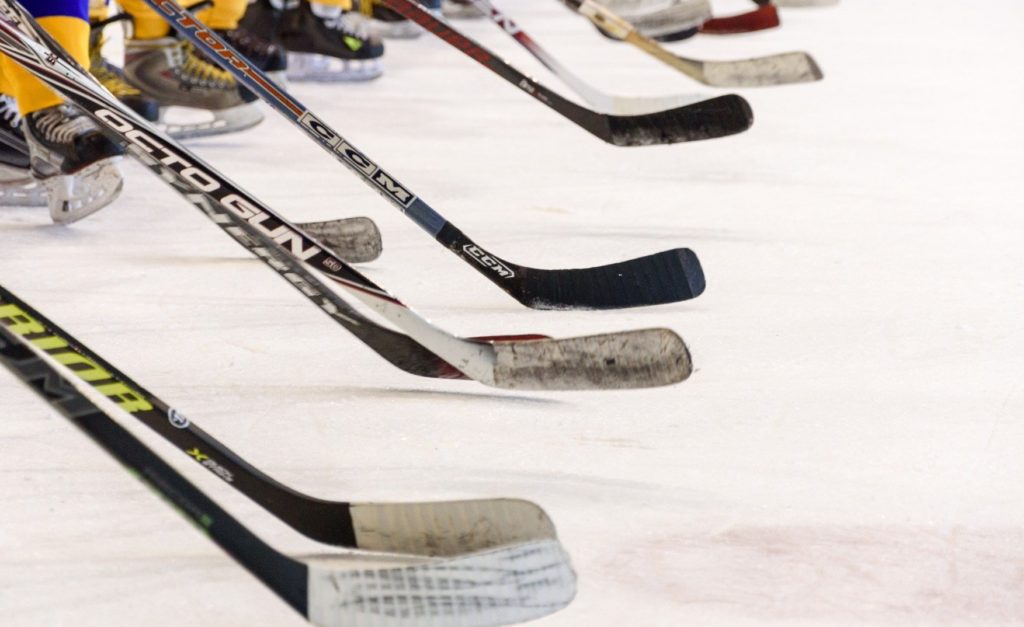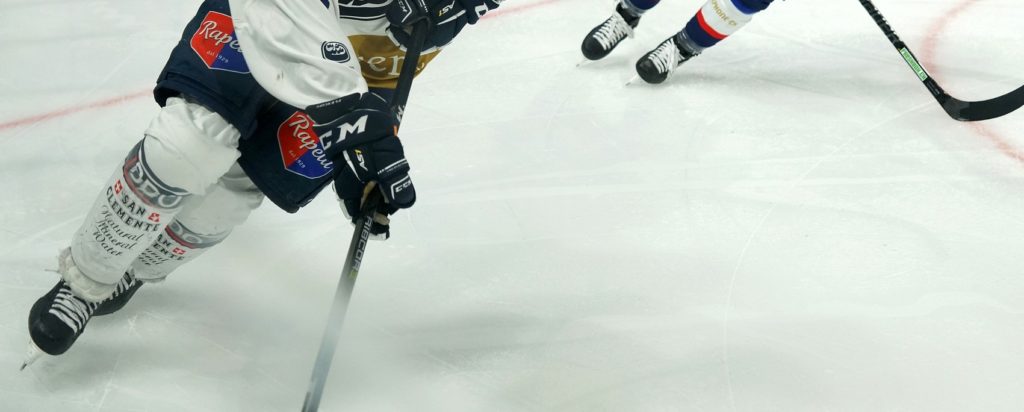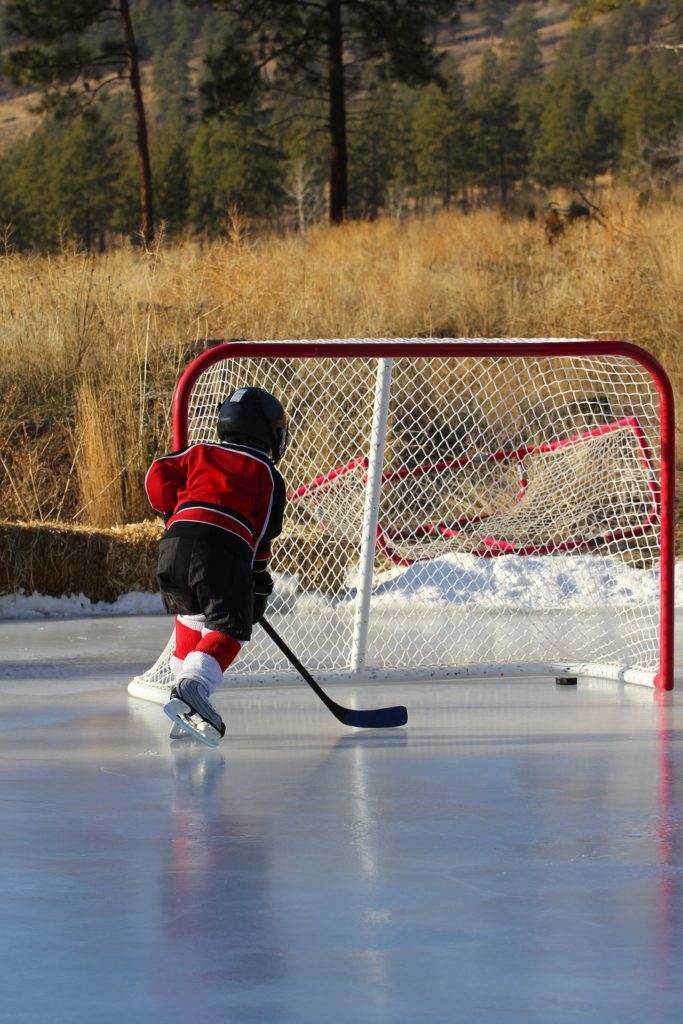
Named one of Money Magazine’s 28 best place to live in the us in 2018, Lakeville Minnesota is known for its humble beginnings as Scandinavian, Irish, and Scottish farm town. This blue collar work ethic has been imprinted into the culture of the area, with General Mills, Target, and Land O Lakes opening up headquarters in or nearby.
Located roughly 30 miles South of Minneapolis, Lakeville is also known for a few other things; lakes, a great school system, The Panorama of Progress, and Hockey. To show just how dominant Minnesota public high school hockey is and the level of competition the top teams in the state face on a weekly basis, let’s look at a sampling of the high school hockey National Rankings in recent years.
2009-1010 Boys High School Hockey National Ranking
1,Minnetonka,MN,______________________ 27 2 2,
2,Delbarton,NJpr,_____________________ 28 1 0,
3,Edina,MN,___________________________ 23 6 2,
4,Eden Prairie,MN,____________________ 22 5 1,
5,Wayzata,MN,_________________________ 21 3 3,
6,Hill-Murray,MN,_____________________ 27 3 1,
7,Detroit Catholic Central,MI,________ 28 1 1,
8,Breck,MN,___________________________ 29 2 0,
9,Bloomington Jefferson,MN,___________ 19 6 3,
10,Blaine,MN,__________________________ 21 6 3,
11,St Thomas Academy,MN,_______________ 22 6 0,
12,Burnsville,MN,______________________ 17 7 3,
13,Centennial,MN,______________________ 18 6 3,
14,Duluth East,MN,_____________________ 20 7 4,
15,Mahtomedi,MN,_______________________ 24 6 0,
16,Warroad,MN,_________________________ 25 5 0,
17,Holy Angels,MN,_____________________ 18 8 1,
18,Benilde-St Margarets,MN,____________ 17 7 3,
19,Roseau,MN,__________________________ 23 7 1,
20,Hermantown,MN,______________________ 27 4 0,
21,Eagan,MN,___________________________ 21 5 1,
22,Gloucester Catholic,NJpr,___________ 15 4 2,
23,Apple Valley,MN,____________________ 18 13 0,
24,Grand Forks Central,ND,_____________ 24 3 0,
25,Moorhead,MN,________________________ 14 11 2,
26,Orchard Lake St Marys,MI,___________ 21 6 2,
27,Cretin-Derham Hall,MN,______________ 19 8 0,
28,Cranbrook,MI,_______________________ 22 7 1,
29,Trenton,MI,_________________________ 25 4 1,
30,Osseo,MN,___________________________ 15 9 3,
(23 out of the top 30 teams in the country were from Minnesota)
2010-2011 Boys High School Hockey National Ranking
1,Eden Prairie,MN,____________________ 24 5 2,
2,Hill-Murray,MN,_____________________ 23 4 1,
3,Duluth East,MN,_____________________ 24 6 0,
4,Wayzata,MN,_________________________ 20 6 2,
5,Edina,MN,___________________________ 19 9 2,
6,Benilde-St Margarets,MN,____________ 22 5 0,
7,Eagan,MN,___________________________ 22 7 2,
8,St Thomas Academy,MN,_______________ 25 6 0,
9,Burnsville,MN,______________________ 19 5 4,
10,Minnetonka,MN,______________________ 17 7 2,
11,Maple Grove,MN,_____________________ 22 4 2,
12,Grand Rapids,MN,____________________ 23 4 1,
13,Apple Valley,MN,____________________ 20 7 1,
14,Malden Catholic,MA,_________________ 22 2 2,
15,Bemidji,MN,_________________________ 23 3 2,
16,Blaine,MN,__________________________ 20 6 4,
17,Moorhead,MN,________________________ 18 10 2,
18,White Bear Lake,MN,_________________ 22 7 2,
19,De La Salle,MI,_____________________ 22 4 1,
20,Hermantown,MN,______________________ 25 4 2,
(18 out of national top 20, including top 13 teams in the country all from Minnesota)
2011-2012 Boys High School Hockey National Ranking
1,Duluth East,MN,_____________________ 29 2 0,
2,Minnetonka,MN,______________________ 24 4 0,
3,Benilde-St Margarets,MN,____________ 25 6 0,
4,Edina,MN,___________________________ 23 7 0,
5,Maple Grove,MN,_____________________ 24 4 2,
6,Eagan,MN,___________________________ 25 5 1,
7,Hill-Murray,MN,_____________________ 24 7 0,
8,St Thomas Academy,MN,_______________ 26 5 0,
9,Breck,MN,___________________________ 26 4 1,
10,Moorhead,MN,________________________ 22 8 0,
11,Lakeville South,MN,_________________ 22 9 0,
12,Eden Prairie,MN,____________________ 17 8 1,
13,Hermantown,MN,______________________ 30 1 0,
14,Wayzata,MN,_________________________ 16 10 1,
(Top 14 teams in the country all from Minnesota)
2012-2013 Boys High School Hockey National Ranking
1,Hill-Murray,MN,_____________________ 27 3 1,
2,St Thomas Academy,MN,_______________ 27 2 2,
3,Benilde-St Margarets,MN,____________ 22 6 0,
4,Edina,MN,___________________________ 25 6 0,
5,Duluth East,MN,_____________________ 26 5 0,
6,Minnetonka,MN,______________________ 19 7 1,
7,Wayzata,MN,_________________________ 22 9 0,
8,Eagan,MN,___________________________ 23 4 1,
9,Grand Rapids,MN,____________________ 19 5 3,
10,Hermantown,MN,______________________ 25 5 1,
11,Blaine,MN,__________________________ 20 6 1,
12,Burnsville,MN,______________________ 17 10 1,
13,Breck,MN,___________________________ 26 4 1,
14,Eden Prairie,MN,____________________ 13 13 1,
(Top 14 teams in the country all from Minnesota)
2013-2014 Boys High School Hockey National Ranking
1,BC High,MA,_________________________ 16 3 4,
2,Malden Catholic,MA,_________________ 20 4 0,
3,Edina,MN,___________________________ 25 4 1,
4,Champlain Valley,VT,________________ 18 1 2,
5,Springfield Cathedral,MA,___________ 17 3 5,
6,Wayzata,MN,_________________________ 20 6 1,
7,Detroit Catholic Central,MI,________ 24 7 0,
8,Lakeville North,MN,_________________ 25 5 1,
9,Cranbrook,MI,_______________________ 25 2 1,
10,Blaine,MN,__________________________ 22 5 1,
11,Hill-Murray,MN,_____________________ 24 4 0,
12,Burnsville,MN,______________________ 19 7 1,
13,Xaverian,MA,________________________ 12 5 6,
14,Austin Prep,MA,_____________________ 16 5 4,
15,East Grand Forks,MN,________________ 28 2 1,
(Lakeville North climbed to number 8 nationally)
2014-2015 Boys High School Hockey National Ranking
1,Edina,MN,___________________________ 26 2 2,
2,Lakeville North,MN,_______ 31 0 0,
3,St. Thomas Academy,MN,______________ 26 5 0,
4,Hermantown,MN,______________________ 27 3 1,
5,Eden Prairie,MN,____________________ 19 11 0,
6,Hill-Murray,MN,_____________________ 21 9 0,
7,Springfield Cathedral,MA,___________ 22 1 2,
8,Elk River,MN,_______________________ 22 5 1,
9,Wayzata,MN,_________________________ 12 12 3,
10,Malden Catholic,MA,_________________ 19 2 2,
Lakeville North National Ranking and Record from 2007/2008 season to 2017/2018
Season Rank W L T
07-08: 148,Lakeville North,MN,__________ 8 17 3
08-09: 191,Lakeville North,MN,___________9 20 0,
09-10: 68,Lakeville North,MN,___________ 12 16 2,
10-11: 62,Lakeville North,MN,___________ 15 15 1
11-12: 38,Lakeville North,MN,_________ 14 14
12-13: 48,Lakeville North,MN,_________ 11 18 1,
13-14: 8,Lakeville North,MN,__________ 25 5 1 (Lost to Edina in state finals)
14-15: 2,Lakeville North,MN,____________ 31 0 0, (State Champs)
15-16: Lakeville North,MN,_________ 21 6 1
16-17: Lakeville North,MN,_________ 20 6 2
17-18: Lakeville North,MN,____________ 16 12 2
This is the story of their climb to an undefeated state title season in Minnesota High School hockey and beyond.
Passion
That is the one word that Coach Trent Eigner uses to describe the Lakeville North Boys Hockey Team. “This is my 4th season at Lakeville” shares Eigner, “We compete directly against Lakeville South. I’m a son of two coaches and have a brother coaching D1 hockey. I know I was meant to do this. I am extremely passionate about mentoring kids. The way we approach our program is we want to help define for kids intrinsically for themselves and extrinsically for themselves a level of commitment they need to aspire to in order to be a successful part of our program.

We talked about this a lot with the press after our state championship run. Our senior class spent most of their four years with me, some had 3 years with me on varsity. Those guys were the birthplace for that level of passion. Although we didn’t have immediate success, as these guys were very young, I challenged them with the is it the chicken or is it the egg. Did they need to achieve a level of success to believe they were good, or would they believe in themselves and achieve a level of success?
The problem in the past is success may have been left to chance. There is no guarantee you are going to have success. If you use this as your crutch you may never succeed. Needing to win a few games to know you are good does not allow the program to go in the direction we wanted to go. We believed we were putting in the effort necessary to build a good program. We believed in ourselves and our effort. If you can see it in your mind, then you can hold it in your hand.
The things that would then follow were the foundational steps to make that happen. I do know if it is something you as a group firmly believe in, then all the work you do will get you to that point. Having faith in something unseen. They wholeheartedly bought into the idea that we were going to be a great program before we were great.
Not only did this mindset take hold at the high school level, but also at the youth level and the entire community that supports our program. I am a 100% firm believer that it is a conscious decision you make for the culture you want for your program.
Always being wary of that culture. Accountably of athletes, selflessness, commitment, work ethic, these can become afterthoughts. If they are not going to have those things, then whatever talent you bring to the table won’t matter.

In essence, these expectations help drive your program from its infancy. The kids realize those fundamental things are things are expected qualities if you want to be a part of the team.
For me, I’ve spoken to groups of parents about this. People who watch our team play don’t always have the good fortune to watch our team practice. The level of success we have gained over a 4 year period is humbly amazing. Given the opportunity to see these kids work on a day to day basis allows you to see where this level of success has come from.
Certain characteristics of success begin to become visible. I saw in my first off-season training with the kids, I saw telltale signs that we were starting to do the right things. I saw kids understand what it meant to commit to what some may call the drudgery of the off-season. To buy into the idea that the work would pay off takes character and selflessness. Those things were signs. If you are marching confidently in a direction, you will notice little things along the way, the good things that will guide you. This is part of the process.”
Overcoming “me”
According to Eigner “You may not be full-blown sick when you go to the Dr, but may have some little symptoms. Little decisions that you make to cut corners, may not hurt you that day, but will affect you later.
If I am supposed to do a set of 10 and only do 9, that is a symptom. No one is going to watch in the offseason. They are telltale signs if you are heading in the right direction or wrong direction.
The kids embraced off-season workouts as both individuals and as a group. The kids came to me and said, “coach we never work out together”. I said that will never happen again.
That was a huge step for us to see 20-30 kids at 7am four days per week in the summer for workouts. We intentionally picked a workout time that forced them to have discipline in getting rest the night before and level of commitment to get up early each morning. This attracts the kids to the program that you want to be a part of your program. The fringe athlete may not buy into the tough hours.
For me the off-season, the entire change to our approach in the off-season and the kids’ attitude toward training was one of those signs.”
Level of Compete
“I am proud of their level of compete, full well knowing we weren’t there yet. We had a fearlessness about us in the way that we played. We were young and not mature enough yet, but we could tell our kids understood what it meant to have a level of compete. What it meant to go out there and sell out and empty your tank regardless off the outcome. They had a vision for how this would look. They believed in themselves and showed this in their level of compete” reflects Eigner.
Expectations

“In the last 2 years, our expectations have gained positive momentum. So many people along the way, during a 16 game win streak, were concerned if the kids could handle the pressure. One of the neat things that people don’t get to see, that as a program, group, and team, is that we embraced the perfection. While everyone around us was concerned about the pressure, we were enjoying the pursuit of perfection.
It is a total change in the natural thinking of the athlete. For a team that went 31-0, we never talked about the wins and losses, but rather talked about challenging ourselves, about the fundamentals, and competing to the level and expectations we had of ourselves. This made it easy for our kids to compete. They were focused on the fundamental things they had control over that made us great. The end result was a byproduct of those things.
It is neat to see the competitive drive of the individual and the group. No matter who we are playing, our kids’ sole focus was to play at the level they felt they could. Our focus never wavered.
I think there is a different level of commitment to that way of thinking, focusing on the process rather than the end result. The end result will take care of itself if the process is the goal.
For example, say a good team loses a couple. Does their mantra change? If you don’t have that initial success, then you are going to wholesale your approach and do something different. This may show that you didn’t have the right process in mind in the first place. If you are steadfast in what you know, and the process is good, you will find success.
With the young kids coming up through our program, kids now have a clear understanding of what the North Hockey program is: it is a team first program. It self-polices itself. We have 8 kids committing to Division 1 scholarships from one team. Kids see this and want to be a part of this culture.
Our kids have gotten to witness kids, working, earning, and achieving, and they feel they can be the next group of kids doing that. The younger kids’ mindset toward preparation has become extremely positive. If they work hard, believe in where they want to go, and remain committed, they are putting themselves in a position to earn and achieve their goals” shares Eigner.
Mentoring and Teaching
“I think there are certain aspects of coaching and mentoring kids that caters to the individual “ says Eigner, “A lot of the guys in the books I like to read always mention being able to identify a Bill Walton or a Dennis Rodman, and how they are different from the other guys. If you have taken the time to identity the things that kids respond well to, they will respond well back to you.
The fundamental things govern and guide a program. The kids need these to be a part of the program. But, within this there needs to be an understanding of what guides and drives each athlete.

I am far more of a passionate emotional coach than I am a yeller or screamer. I like to explain things to kids very clearly and fairly. I want them to understand that in their pursuit of hockey excellence, certain attributes are rewarded, especially in a team setting.
To me, if you do a good job of explaining, mentoring, and setting parameters, in your program, then you will get kids that have a desire to compete at a high level. They will have a level of commitment you want to see, and the program then guides the athletes. The expectations are clear, then the leaders of the team start to take over.
I am definitely a teacher as a coach. I think that kids/athletes are sponges. They want to be taught. They have a desire to learn and a desire to challenge themselves. I am more of mentor than a coach. I want kids to have a clear understanding, so we give them a clear understanding, so they have a path to success.
I feel on the road to success there are so many opportunities to learn from and respond to/overcome adversity. Failure to achieve a goal allows them to work backward, learn, and help themselves get better. They can leave the womb and still find success because they have been taught things that work and things that don’t. They are always growing.”
How Important is trust? “Trust is paramount. The parents understand that you have clearly taken the time to hear the kid’s goals. From the athlete’s perspective, I think those kids really thrive when they know you have their best interest in mind. All you are asking of them is to keep the program paramount to their individual successes” shares Eigner.
One Program
According to Eigner “We could not get by without a highly successful youth program. At a public high school, it is paramount to have that. The record in youth doesn’t matter, but if those kids don’t have a clear understanding of what it means to be a part of this program, then you become the chicken or the egg deal again.

We don’t have the luxury of having a massive number of athletes where we don’t have to invest in the youth program. We have a mentorship program where our players are at practices with the youth program kids. We have chalk talks, our guys are at games etc; we have to invest considerable time and effort in these kids not only to develop these kids at a young age but also, to get them and their families to buy into the culture.
Those attributes that give kids the best chance for success both on and off the ice can be lacking in some of the more talented kids. At some point these kids will bump their heads. We focus on mentoring the kids as human beings and teaching them what a positive experience being part of a strong team culture can be. We want them to see and understand true levels of success and understand the process of improving in anything. Have seen great kids with moderate talent but great work ethic, drive, and competitiveness achieve more than more talented athletes with moderate to low work ethic, drive, and competitiveness.
We have three quarters of our team who participates in multiple sports. I am a firm believer that that is 100 percent the way to go. There are some things in other sports that cannot be replicated in hockey, such as guy up to bat with 2 outs in the 7th; you cannot replicate that pressure, the feelings going through the kid mind. The positives of competing in multiple sports far outweigh the negatives, both physically and by far and away, mentally. The kids are learning how to compete. Three of our nine scholarship guys played baseball up to junior year; our goaltender was a soccer player up through 8th grade; 2 still play lacrosse, and one played baseball and football through 9th grade.”
Strategy vs Culture
“I feel it is 90/10 culture vs strategy. One distinct advantage for our kids is that we play a very aggressive style of hockey. It is by design that we play that way, because it fuels the kid’s passion. Every kid wants to have fun; that is the reason they started playing in the first place. It has to be fun.
You would never have anybody call me a strategist by any means. Our kids will give everting they can. It wouldn’t matter what strategy I dictated if I had an undedicated lazy group of kids.
We are a white collar and blue collar town. By nature, the demographic area is viewed more as an old farming community. It is probably viewed as more blue collar than some of the towns we compete against. When you talk about grit, I think that goes back to the culture you create. Compete is a term we use more often than not” says Eigner.
“In the beginning we had entitlement” recalls Eigner, “Back then if a kid played for top team in the youth program, he might feel entitled to one of the top 20 spots on varsity. We want every kid to feel they have a shot at success if they are willing to work, be respectful and coachable, and stay committed to their goals and the goals of the program.”
Coaching Evolution
“I would take a far more cerebral approach to understand what it means to be a good coach” shares Eigner, “Coaching is such an all-encompassing thing. I was a little more fiery as a young coach and am more cerebral now. I have held on to a genuine passion for hard work, discipline, etc.

I am far more patient now than when I started, especially in terms of the progression of the team. Your decisions become slower and more methodical. You pay far more attention to the culture surrounding your program than the power play that went bad two weeks ago or the line change that did not work.
I am privileged to have had some good teachers and fortunately, was smart enough to listen to them. I am always looking to learn. I study the occupation of coaching. I love to learn. It is not always about the sport itself, but he relational issues coaches have with players. How on the exterior some guys can appear so unwelcoming, and yet you hear guys that played for them, there is this great deal of respect to their coaching and genuine drive for greatness.
Take for example Belichick. Players that play for him have a great deal of respect for his desire for perfection. They are willing to overlook his imperfections. Kids pick up on sincerity. Passion and trust are things you cannot bluff. Those things are what separate real quality coaches and great athletes. The athlete who trains when no one is watching only does so for his own betterment. Strategy wouldn’t matter against our team as our culture was so deep. The level of commitment and trust for what we were trying to do was incredible.
We had a family environment. In the press conference after we won the 2015 state tournament the kids would tell the press in press conferences that our strongest attribute was that we stuck together. That made me so proud as a coach, as the kids realized more than wins, what it truly meant to be a part of a team. Oftentimes the toughest team we played was the one in practice every day. That is why I tell people all the time, if you had the luxury to watch our practices you would see why were have been able to achieve a high level of success.”
Values learned along the way
“Trust. Sincerity. Trust comes in so many ways and is a great life fulfilling trait to have. The things you can’t bluff are important. When we talk about pride, it is the unseen things that you do that speaks to the level of pride you have as an athlete and person.”
Thanks for reading and be sure to check out our other winning culture articles and more on our blog page.


